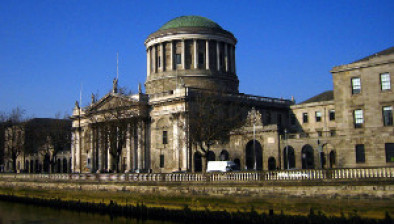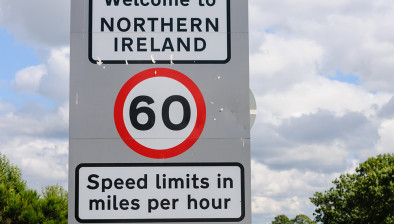NI: NI Court of Appeal: Drunk and drugged driver who killed QUB student has sentence increased
The drunk driver who killed Enda Dolan, the 18-year-old first-year architecture student at Queen’s University, has had his sentence increased by two years after the Director of Public Prosecutions (DPP) challenged the overly generous mitigation in the man’s sentencing.

About this case:
- Judgment:
In a reference by the DPP under section 36 of the Criminal Justice Act 1988, it was submitted before the three-judge Court of Appeal that a determinate custodial sentence of 7 years’ imprisonment comprising 3½ years in custody and the same on licence was unduly lenient.
Background
The sentence was imposed on Mr David Lee Stewart following his plea of guilty to one count of causing death by dangerous driving and separate offences of dangerous driving, failing to provide a specimen, failing to stop and failing to remain contrary to the Road Traffic (Northern Ireland) Order 1995
The Court heard that on the evening of 14 October 2014, Mr Stewart consumed in excess of 13 alcoholic beverages in Lavery’s bar in Belfast city centre, before driving to Thompson’s nightclub at around 1am. Approximately an hour later, Mr Stewart got back into the driver’s seat of his work van and drove off.
At around 2:20am Mr Stewart’s van approached a right-hand bend around which 18 year-old Enda Dolan was walking on the footpath. Mr Stewart undertook a taxi driving in the outside lane and the taxi driver considered that the van was travelling at somewhere between 50 and 60 mph. The van hit the kerb and mounted the footpath colliding with Enda on the front offside.
Mr Stewart did not stop and Enda Dolan was then carried on the roof of the van for 800 metres before the van mounted the footpath again and came to a halt.
The passenger emerged from the vehicle and saw Enda Dolan, but returned to the vehicle which drove off. The van again came to a halt Roads when Mr Stewart lost control of the vehicle, mounted the kerb striking a tree and collided with a lamppost.
Enda Dolan, a first-year student at Queen’s University studying architecture, was pronounced dead after being removed to the Royal Victoria Hospital.
Mr Stewart was asked to provide a sample of blood at 4:53 am but replied “In the morning”. When interviewed after caution the following morning he alleged that he only consumed 2 pints of shandy while in Lavery’s bar.
When a specimen was finally taken with his consent, a back calculation report indicated that the most likely blood alcohol concentration at the time of the incident was three times the legal limit. Blood tests also showed traces of cocaine and benzodiazepines as well as a compound derived from cannabis.
The High Court
Under Section 285 (6) of the Criminal Justice Act 2003 (which came into force by virtue of the Criminal Justice Act 2003 (Commencement No.2 and Saving Provisions) Order 2004) increased the maximum penalty in this jurisdiction for dangerous driving causing death or grievous bodily injury from ten years to fourteen years’ imprisonment.
The trial judge recognised that he should sentence in accordance with the guidelines set by this court in R v McCartney NICA 41; which states that the sentencing range for cases of the most serious culpability is between seven and 14 years’ imprisonment
The trial judge considered a number of aggravating factors including the extremely high level of consumption of alcohol and drugs; the long and persistent course of very bad driving including going through a red light at speed, and driving on for a distance of 800 metres after the collision; and Mr Stewart’s failure to stop and to remain at the scene clearly indicated irresponsible behaviour after the offence.
Having taken all those factors into account he was satisfied that this was a case of the most serious culpability and in his view the appropriate starting point for the sentence in this case was 12 years’ imprisonment.
The mitigating factors included the fact that Mr Stewart had revoked his own bail and was in custody which demonstrated genuine remorse. In addition, the judge took into consideration Mr Stewart’s previous good record and his good work and family history.
Reducing the starting point by 25% for mitigating factors, the judge reduced the sentence by a further two years resulting in a determinate custodial sentence of seven years, with sentences for dangerous driving, etc. to run concurrently.
Court of Appeal
On behalf of the DPP it was contended that in light of the decision in R v Pollock NICA 43 the discount for the plea ought not to have been as great as in a case where a workable defence was possible. Furthermore, the trial judge’s approach to mitigating features was too generous.
The three judge Court of Appeal accepted that sentencing in this area was intended to deter and in those circumstances the impact of personal mitigation reduced.
The Court accepted the submission that the discount for the plea reflected an element of remorse, but that it should not be repeated by way of personal mitigation.
Accordingly, the discount of 25% for the plea in this case was overly generous – Mr Stewart failed to provide a specimen while at the hospital, and did not cooperate at the earliest stage of his engagement with police.
The Court stated that Mr Stewart had been “caught red-handed”, and that even taking into account an assessment of genuine remorse; the discount should not have exceeded 20% and should not have been included again as an element of mitigation.
Allowing appropriate discount for the plea leads to a sentence somewhere between nine and 10 years. Taking into account double jeopardy, the Court decided to substitute for the sentence on count one a determinate custodial sentence of nine years comprising 4½ years in custody and 4½ years on licence.
Stating that the legislation prohibited the Court from identifying any longer period in custody, Lord Chief Justice Morgan added that there was nothing the Court could do to turn the clock back and that what had happened was senseless, needless, and entirely avoidable.









